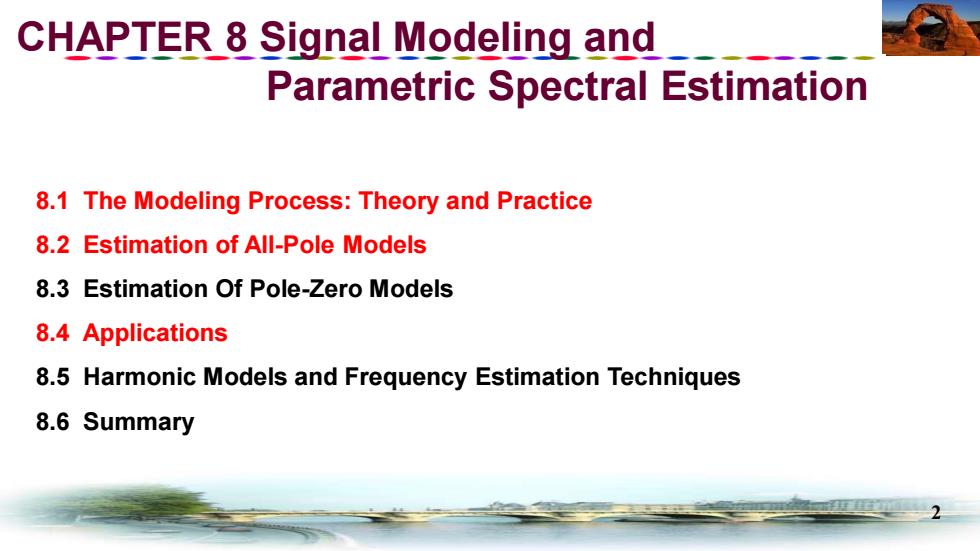
CHAPTER 8 Signal Modeling and Parametric Spectral Estimation 8.1 The Modeling Process:Theory and Practice 8.2 Estimation of All-Pole Models 8.3 Estimation Of Pole-Zero Models 8.4 Applications 8.5 Harmonic Models and Frequency Estimation Techniques 8.6 Summary
2 8.1 The Modeling Process: Theory and Practice 8.2 Estimation of All-Pole Models 8.3 Estimation Of Pole-Zero Models 8.4 Applications 8.5 Harmonic Models and Frequency Estimation Techniques 8.6 Summary CHAPTER 8 Signal Modeling and Parametric Spectral Estimation
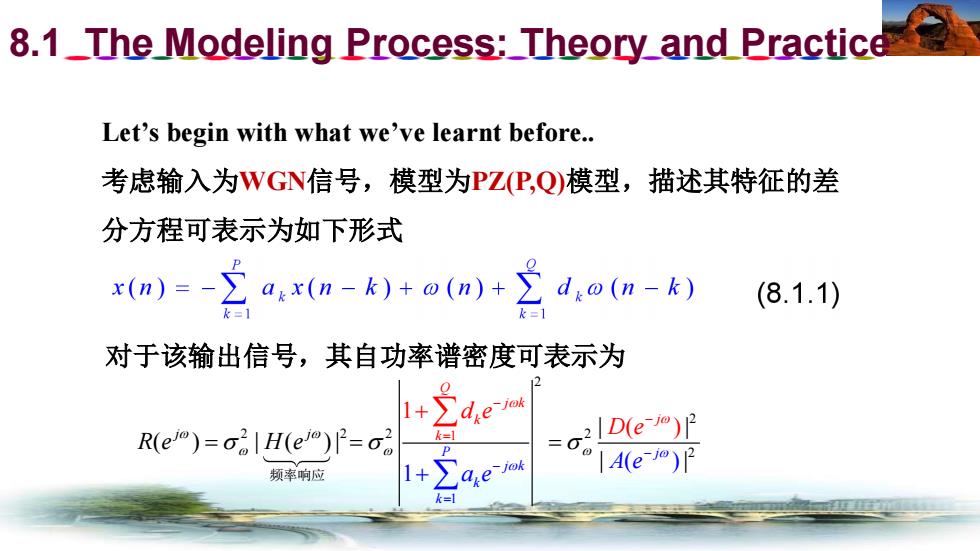
8.1 The Modeling Process:Theory_and Practice Let's begin with what we've learnt before. 考虑输入为WGN信号,模型为PZP,Q)模型,描述其特征的差 分方程可表示为如下形式 x(n)-d:x(n-k)+o(n)d,o(n-k) (8.1.1) 对于该输出信号,其自功率谱密度可表示为 2 l+∑dea R(e)=o2|H(e0)P=o2 k=1 2D(e) A(e-jo)2 频率响应 ae-jok
8.1 The Modeling Process: Theory and Practice Let’s begin with what we’ve learnt before. 考虑输入为WGN信号,模型为PZ(P,Q)模型,描述其特征的差 分方程可表示为如下形式 对于该输出信号,其自功率谱密度可表示为 2 2 2 2 2 2 2 1 1 ( ) | ( ) | | ( ( )| 1 | | 1 ) Q j k k j P j j j k k j k k R H A e a d e e D e e e − − = − = − = = = + + 频率响应
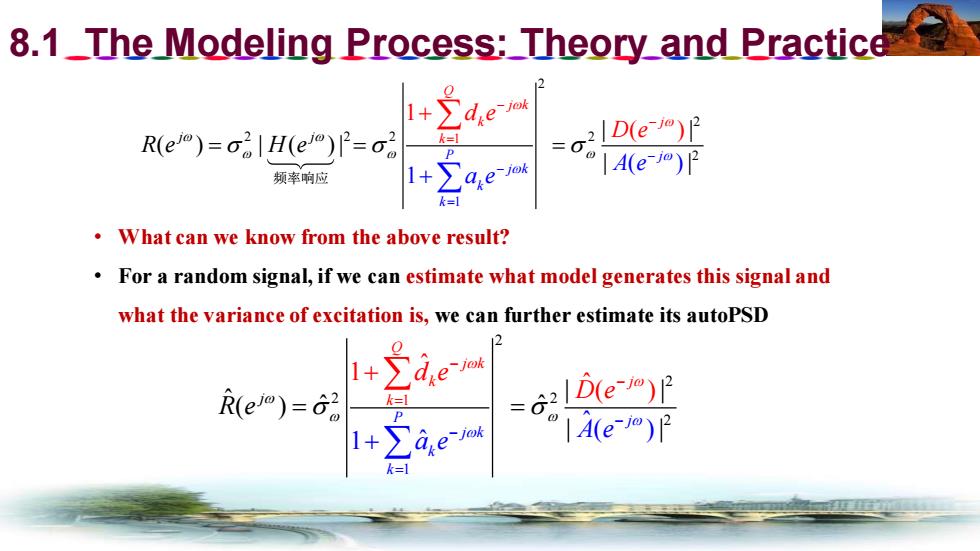
8.1_The Modeling Process:Theory_and Practice +∑dea R(e)=H(ef)2 k= 2D(e-i) = A(e-)P 频率响应 1+∑aea k=1 What can we know from the above result? For a random signal,if we can estimate what model generates this signal and what the variance of excitation is,we can further estimate its autoPSD 0 l+∑de R(e)=6 k= =G2ID(e)p l+∑aem Ae)P k=
8.1 The Modeling Process: Theory and Practice 2 2 2 2 2 2 2 1 1 ( ) | ( ) | | ( ( )| 1 | | 1 ) Q j k k j P j j j k k j k k R H A e a d e e D e e e − − = − = − = = = + + 频率响应 • What can we know from the above result? • For a random signal, if we can estimate what model generates this signal and what the variance of excitation is, we can further estimate its autoPSD 2 2 2 1 1 2 2 | | ˆ 1 ˆ 1 ˆ ˆ ( ) ˆ ( ) | | ˆ ˆ ( ) Q j k k P k j k j j j k k d e D A e a e R e e − − = − − = = + = +
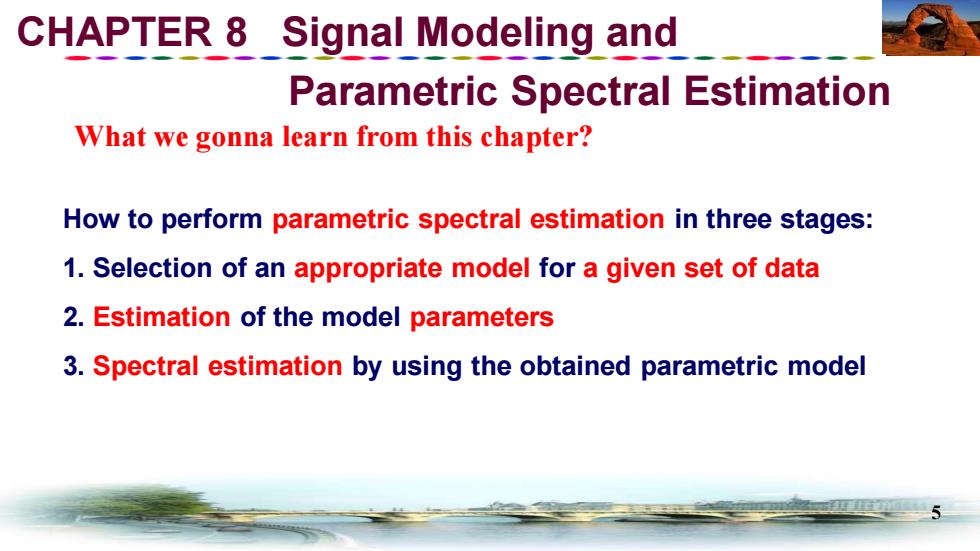
CHAPTER 8 Signal Modeling and Parametric Spectral Estimation What we gonna learn from this chapter? How to perform parametric spectral estimation in three stages: 1.Selection of an appropriate model for a given set of data 2.Estimation of the model parameters 3.Spectral estimation by using the obtained parametric model
5 How to perform parametric spectral estimation in three stages: 1. Selection of an appropriate model for a given set of data 2. Estimation of the model parameters 3. Spectral estimation by using the obtained parametric model CHAPTER 8 Signal Modeling and Parametric Spectral Estimation What we gonna learn from this chapter?
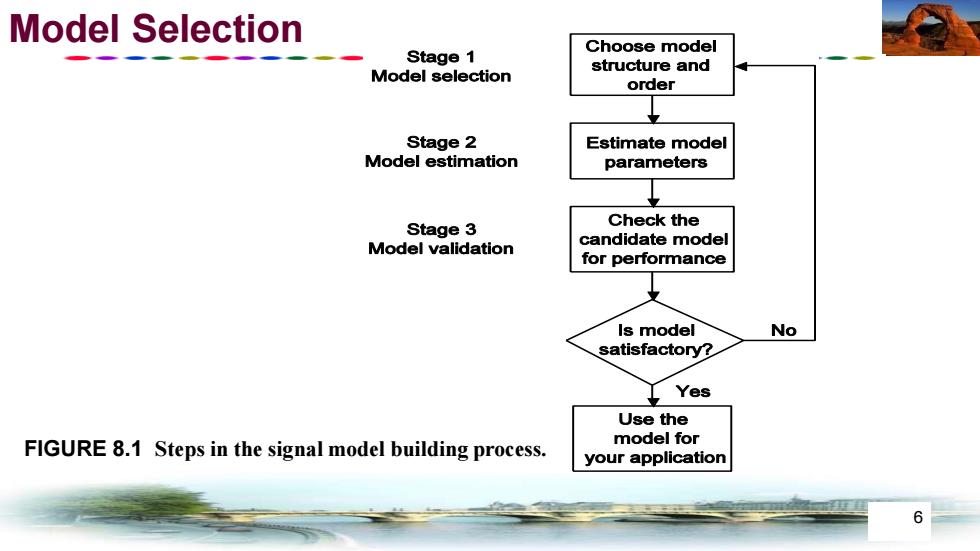
Model Selection Choose model Stage 1 structure and Model selection order Stage 2 Estimate model Model estimation parameters Stage 3 Check the Model validation candidate model for performance Is model No satisfactory? Use the FIGURE 8.1 Steps in the signal model building process. model for your application 6
6 Model Selection FIGURE 8.1 Steps in the signal model building process